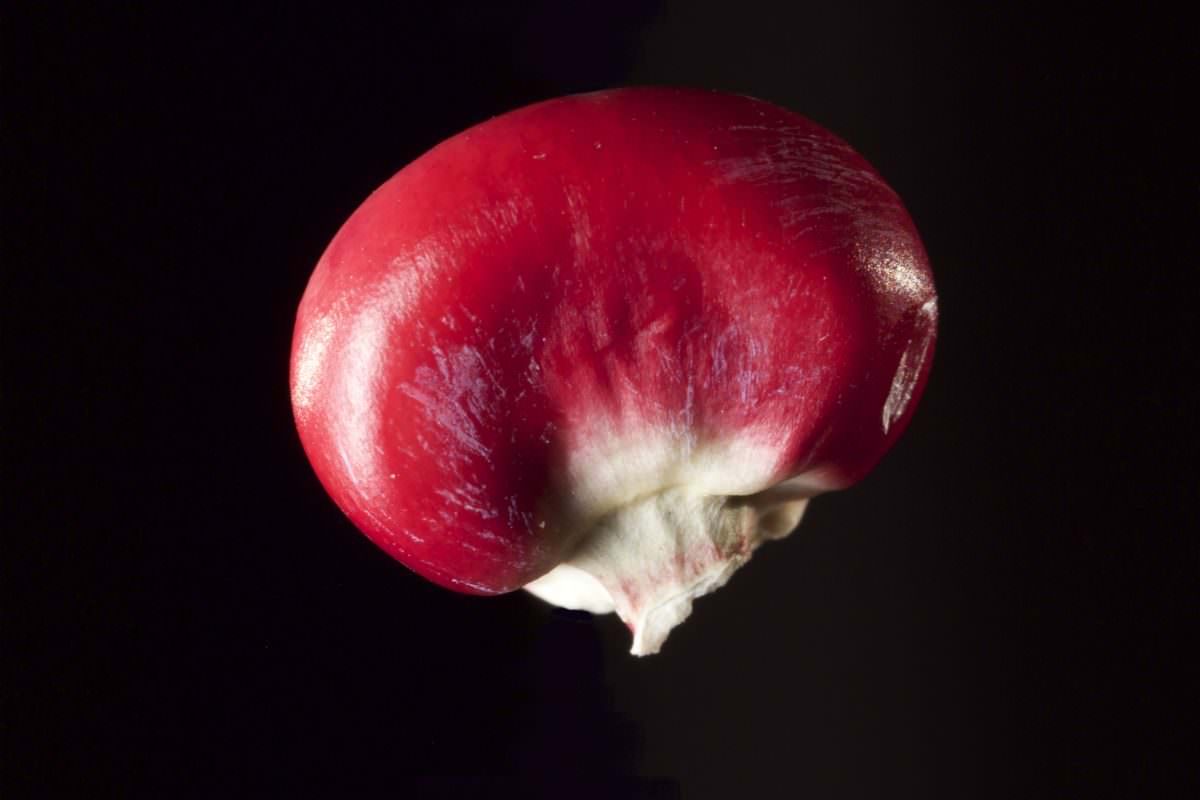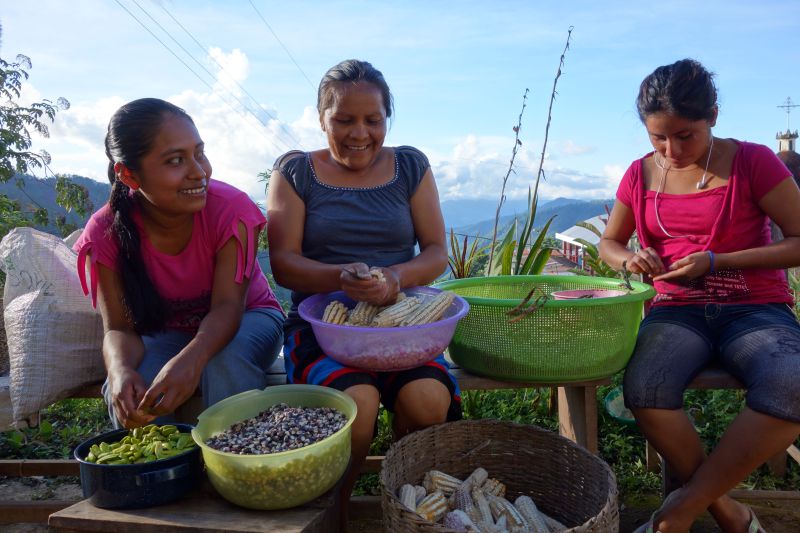“Seed: The Untold Story” Will Make You Look at Plant Babies in a Whole New Way
A new film that tells the story of seeds, and those fighting for their survival.
“Seed: The Untold Story” Will Make You Look at Plant Babies in a Whole New Way
A new film that tells the story of seeds, and those fighting for their survival.

“I think the film has been a huge wakeup call for us, even as people who had kind of become experts in sustainable agriculture,” says Betz. The two directors worked together on a previous film, Queen of the Sun: What Are the Bees Telling Us?, and Siegel had previously directed a documentary called Real Dirt on Farmer John, about a farmer whose family farm was on the brink of collapse. But both describe this new film as the capstone in the series, the one that really gets, please forgive the phrasing, at the root of so many issues facing modern agriculture.
Seed: The Untold Story is a combination of ideas: It showcases the raw beauty and majesty of seeds, the battles growers have with giant corporations over control of seeds, and the quirky, eccentric folk known as “seed-savers” who obsessively catalogue and preserve seeds. The trailer for the documentary has racked up millions of views already, many presumably from people who didn’t realize they might care or be interested in the wonders of seeds. “We’ve never had anything like this [response], with any of our films,” says Taggart. “And it’s growing every day.”
SEED: The Untold Story (Official Theatrical Trailer) from Collective Eye Films on Vimeo.
The germ of the concept (ugh, sorry) came by chance, from a National Geographic article about Norway’s Svarlbard Global Seed Bank, one of the world’s foremost collection of seeds. This led the filmmakers to research and discover the central battle over seeds: With the rapid conglomerate takeover of the seed industry by companies like Monsanto, the rarer, smaller, and more interesting varieties of plants around the world are being lost. “What we’re seeing is that the one-size-fits-all test plots, that model is broken, and we’re starting to see how broken it is,” says Betz.
“Seeds are incredibly, incredibly beautiful. You realize every seed is an architectural wonder and a work of art.”
But the film is gorgeous and fascinating in a non-pedantic way; the directors made a conscious effort to turn what could be a dry and contentious subject into something wondrous. “Seeds are incredibly, incredibly beautiful,” says Betz. “You realize every seed is an architectural wonder and a work of art. So we thought, okay, there’s visual substance here with the actual subject matter. Because otherwise they’re inanimate objects, right? They’re very difficult filmically. They don’t move. So how do you get an audience to connect with this?”
This presented a fun challenge for the filmmakers: How do you make a seed, a humble, small, inanimate object, pop on screen? They accomplished that task through basically every filming technique that they could possibly use: macro lenses, playing with light to enhance the size and color of seeds, even constructing a plexiglass case over the camera and then bombarding the camera with seeds in slow-motion. Seeds were shot incredibly close up with light moving slowly over them “so they became like planetary seeds, like seeing dawn and dusk over the seeds,” says Betz.
They even created what Siegel describes as a sort of ant farm for seeds, a narrow glass case filled with dirt in which various seeds were planted. From three angles, three cameras would shoot the seeds in time-lapse, every five to ten minutes, over a period as long as a month, to capture the moments when the seed bursts forth, plants roots, reaches for the sun.

Some stories, like the transformation of corn from its nearly inedible ancient state to the thousands of varieties we have today, are not really stories that can be told through direct photography. So the team contracted traditional animators to tell those stories: some constructed narratives by stop-motion filming of sand on light boxes, and one used what sounds like a brutally time-consuming method of cut-out paper. “History can be really dry unless you make it entertaining,” says Betz. “With all of Taggart’s films, you want to make a film that’s not simply educational and dry but a film that people actually want to see, a kind of date night documentary in a way.”
But the directors also want to emphasize that seeds themselves aren’t necessarily boring or dull. Seed-savers, as you might expect, are not really regular people; the urge to save and organize seeds is catnip for the obsessive and the hoarder-types. “Seed-savers are visual people too, they’ve got, like, glass-gem corn that’s amazing, blues and yellows and reds all together on one corncob,” says Betz. “You look at it and you’re like, I can’t believe that this is real corn.” And the seed-savers themselves make for great subjects. “We found seed-savers who were hoarders, seed-savers who were adventurers, seed-savers who were political, seed-savers who were hermits, the whole gambit,” says Betz.
What Siegel and Betz want viewers to take away from the film isn’t just a kaleidoscope of colors and movement and wacky characters and moral outrage – though the film certainly has all of those things. “Seed-saving isn’t just important, and it isn’t just this huge global issue, but it’s also fun,” says Betz. “It’s a fun hobby, it’s endless, it’s challenging, and I think many many gardeners that see this film who are already into growing on some level get this new light in their eyes like, yeah, I’m gonna start saving seeds this year.”
Seed: The Untold Story begins select screenings in New York City today, September 23, and Los Angeles on September 30, but they’ve also set up a partnership with GATHR, which allows a sort of crowdfunded viewing for smaller markets. If you can sell out a certain amount of tickets, they’ll make sure the movie comes to your town. You can learn more about the screenings and GATHR on the movie’s site.
Follow us
This work is licensed under a Creative Commons Attribution-NoDerivatives 4.0 International License.
Want to republish a Modern Farmer story?
We are happy for Modern Farmer stories to be shared, and encourage you to republish our articles for your audience. When doing so, we ask that you follow these guidelines:
Please credit us and our writers
For the author byline, please use “Author Name, Modern Farmer.” At the top of our stories, if on the web, please include this text and link: “This story was originally published by Modern Farmer.”
Please make sure to include a link back to either our home page or the article URL.
At the bottom of the story, please include the following text:
“Modern Farmer is a nonprofit initiative dedicated to raising awareness and catalyzing action at the intersection of food, agriculture, and society. Read more at <link>Modern Farmer</link>.”
Use our widget
We’d like to be able to track our stories, so we ask that if you republish our content, you do so using our widget (located on the left hand side of the article). The HTML code has a built-in tracker that tells us the data and domain where the story was published, as well as view counts.
Check the image requirements
It’s your responsibility to confirm you're licensed to republish images in our articles. Some images, such as those from commercial providers, don't allow their images to be republished without permission or payment. Copyright terms are generally listed in the image caption and attribution. You are welcome to omit our images or substitute with your own. Charts and interactive graphics follow the same rules.
Don’t change too much. Or, ask us first.
Articles must be republished in their entirety. It’s okay to change references to time (“today” to “yesterday”) or location (“Iowa City, IA” to “here”). But please keep everything else the same.
If you feel strongly that a more material edit needs to be made, get in touch with us at [email protected]. We’re happy to discuss it with the original author, but we must have prior approval for changes before publication.
Special cases
Extracts. You may run the first few lines or paragraphs of the article and then say: “Read the full article at Modern Farmer” with a link back to the original article.
Quotes. You may quote authors provided you include a link back to the article URL.
Translations. These require writer approval. To inquire about translation of a Modern Farmer article, contact us at [email protected]
Signed consent / copyright release forms. These are not required, provided you are following these guidelines.
Print. Articles can be republished in print under these same rules, with the exception that you do not need to include the links.
Tag us
When sharing the story on social media, please tag us using the following: - Twitter (@ModFarm) - Facebook (@ModernFarmerMedia) - Instagram (@modfarm)
Use our content respectfully
Modern Farmer is a nonprofit and as such we share our content for free and in good faith in order to reach new audiences. Respectfully,
No selling ads against our stories. It’s okay to put our stories on pages with ads.
Don’t republish our material wholesale, or automatically; you need to select stories to be republished individually.
You have no rights to sell, license, syndicate, or otherwise represent yourself as the authorized owner of our material to any third parties. This means that you cannot actively publish or submit our work for syndication to third party platforms or apps like Apple News or Google News. We understand that publishers cannot fully control when certain third parties automatically summarize or crawl content from publishers’ own sites.
Keep in touch
We want to hear from you if you love Modern Farmer content, have a collaboration idea, or anything else to share. As a nonprofit outlet, we work in service of our community and are always open to comments, feedback, and ideas. Contact us at [email protected].by Dan Nosowitz, Modern Farmer
September 23, 2016
Modern Farmer Weekly
Solutions Hub
Innovations, ideas and inspiration. Actionable solutions for a resilient food system.
ExploreExplore other topics
Share With Us
We want to hear from Modern Farmer readers who have thoughtful commentary, actionable solutions, or helpful ideas to share.
SubmitNecessary cookies are absolutely essential for the website to function properly. This category only includes cookies that ensures basic functionalities and security features of the website. These cookies do not store any personal information.
Any cookies that may not be particularly necessary for the website to function and are used specifically to collect user personal data via analytics, ads, other embedded contents are termed as non-necessary cookies.